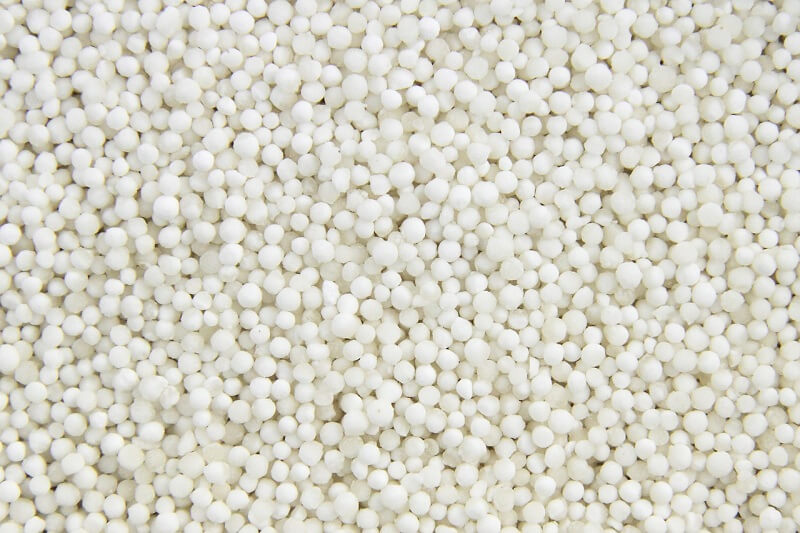What is tapioca and what properties does it have?
Tapioca comes in the form of flakes, flour, or pearl balls from South America. Its easily digestible and nutritious properties were discovered there. Tapioca is obtained from cassava tubers, which are very popular among the inhabitants of Latin America, but also in Asia, where they are part of their daily diet.
What is tapioca ?
Obtained from cassava, tapioca is nothing more than groats. It is a flour, a starch product produced by grinding tubers of tropical cassava. Edible cassava is a shrub that can grow up to 3 meters tall. It is cultivated mainly in Peru, Bolivia, and Brazil, but can also be found in Nigeria, Thailand, and Vietnam. Just as the most popular vegetable in Poland is the potato, cassava is the leading crop in these regions. The largest tubers are used to make tapioca. So far, we are not accustomed to tapioca in Poland. However, it is becoming increasingly available, and it is worth taking a look at its properties.
Great culinary potential of tapioca
Tapioca has quite a bit of culinary potential. This includes, for example, the following: This is why its popularity is constantly growing. Like tofu, tapioca is characterized by its neutral flavor, which allows it to easily absorb other flavors and perfectly complement desserts or make a great addition to dinner. Tapioca balls or flakes swell and become transparent when cooked, making it an excellent thickener for soups.
Tapioca also goes perfectly with all floury, sweet dishes served as dessert:
- Pancake,
- mousse,
- Soufflés,
- Jellies,
- Pudding,
The most popular delicacy, which cannot exist without tapioca, is the so-called bubble tea. It is a special tea with added fruit flavors or milk, as well as tapioca balls. They can also be soaked in fruit or citrus juice to add to beverages. Tapioca can also be used as a substitute for noodles.
What properties does tapioca have ?
An important feature of tapioca is that it supports the digestive system and is also easily digestible. This is because the carbohydrates in tapioca are very efficiently absorbed by the body. It's also worth remembering that tapioca has a high glycemic index compared to potato or grain starch, so diabetics should limit its consumption.
Also worth mentioning is the nutritional value of tapioca. It contains vitamins B6 and A (obtained from yellow cassava in tapioca), monounsaturated, saturated, and polyunsaturated acids, as well as minerals:
- calcium
- iron
- magnesium
- phosphorus
- potassium
- sodium
- zinc
Tapioca contains fairly large deposits of what's known as resistant starch. What does it mean? Resistant starch is a carbohydrate and provides food for the beneficial bacteria in our digestive system. Gut bacteria unknowingly convert starch into short-chain fatty acids, which provide energy for the cells of the large intestine. Starch itself has several health-promoting properties.
THE PUBLISHER'S CHOICE
Almonds 1 kg BIOGO
- €11,69
€13,75- €11,69
- Unit price
- / per
Walnuts 800 g BIOGO
- €8,65
€10,18- €8,65
- Unit price
- / per
Dried organic mango 400 g BIOGO
- €10,99
- €10,99
- Unit price
- / per
Dried White Mulberries 500 g ORGANIC
- €5,84
€6,87- €5,84
- Unit price
- / per
Dried organic figs 800 g BIOGO
- €30,12
- €30,12
- Unit price
- / per
Unpeeled buckwheat groats 1 kg BIOGO
- €2,81
€3,31- €2,81
- Unit price
- / per
Organic coconut flakes 500 g BIOGO
- €10,07
- €10,07
- Unit price
- / per
Organic oat flakes 600 g BIOGO
- €3,77
- €3,77
- Unit price
- / per
Organic cashew nuts 1 kg BIOGO
- €19,99
- €19,99
- Unit price
- / per
Milk thistle seeds 1 kg BIOGO
- €3,99
- €3,99
- Unit price
- / per









































































































































